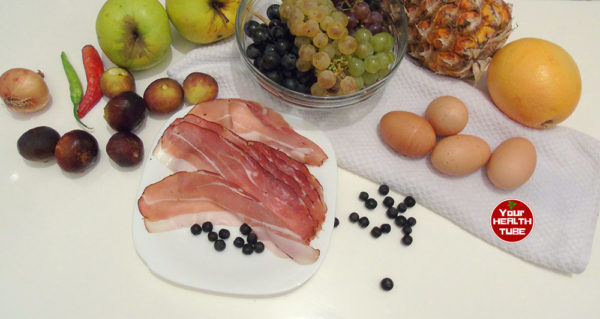Paleo diet (also known as the caveman diet, stone-age diet, or Paleolithic diet) is a diet built on the varieties of foods presumed to have been consumed by early (Paleolithic) humans, consisting principally of fish, meat, fruit, and vegetables, and excluding processed food and grain or dairy products.
The diet is created on avoiding not only processed foods but rather the nutrients that humans started consuming after the Neolithic Revolution when people transitioned from a hunter-gatherer lifestyle to established agriculture. The ideas behind the Paleo diet can be traced to Walter Voegtlin, and have been promoted more recently in the books of Loren Cardain.
Tips to Make the Paleo Diet a Part of Your Lifestyle:
- Breakfast
Make an omelet. Sauté peppers, onion, broccoli, and mushrooms in olive oil; add free-range or omega-3-enriched eggs, and chicken breast or diced turkey.
- Lunch
Paleo lunches are simple. At the beginning of the week, prepare a huge salad with your favorite ingredients. A good starting point could be mixed spinach, greens, cucumbers, bell peppers, radishes, avocados, carrots, almonds, walnuts, and sliced pears or apples. Store the salad in a container. Every morning makes a single serving of the large batch and mix in seafood of choice (shrimp, salmon, or some fresh seafood or fish) or some meat (beef slices, ground beef, ground bison, turkey, pork chunks, chicken, etc.) Toss with lemon juice and olive oil and you are set!
- Dinner
You can try spaghetti squash as a replacement of any paste recipe. Top with marinara, meatballs, and pesto. Roasted beets and their greens make a fantastic side dish for pork. Broccoli, spinach, and asparagus can be steamed rapidly. Halibut, salmon, or some other fish filets grill well with additional foil packs full of cut vegetables with garlic and olive oil.
- Dessert
Berries and other juicy fruits make a marvelous dessert. Celery sticks and pre-cut carrot, sliced fruit, and pre-portioned dried fruit/raw nut mixes are simple and easy snacks.
Daily Sample Straight from Dr. Cordain:
- Breakfast:Free ranging or Omega-3 eggs with chopped parsley, scrambled in olive oil. Herbal tea, orange, grapefruit, or some other fresh fruit in season
- Snack:Fresh apricots, sliced lean beef, or seasonal fruit
- Lunch:Herbal tea, Caesar salad with chicken (lemon dressing and olive oil)
- Snack: Raw walnuts, apple slices
- Dinner:Grilled skinless turkey breast; avocado and tomato slices; steamed artichoke, broccoli, and carrots; a bowl of almonds, raisins, and fresh blueberries; a glass of mineral water or white wine. (Evidently, wine would never have been available to the ancestors, however, the 85:15 rule allows you to consume 3 non-Paleo meals weekly.)
What You Should Eat?
- Seafood/fish
- Grass-fed meats
- Fresh vegetables
- Fresh fruits
- Healthy oils (walnut, olive, macadamia, coconut, avocado, flaxseed)
- Eggs
- Seeds
- Nuts
What You Shouldn’t Eat?
- Legumes (including peanuts)
- Cereal grains
- Potatoes
- Dairy
- Processed food
- Refined sugar
- Candy/processed/junk food
- Refined vegetable oils
- Overly salty foods
Conclusion:
Like many other fad diets, this diet is promoted as a good way of improving health. Some limited data exist on the metabolic effect on individuals eating Paleo diet may lead to improvements in terms of metabolic effects and body composition as compared to the standard Western diet. However, following the Paleo diet can lead to an inadequate intake of calcium. Therefore, it would be best to consult your GP or nutritionist before you decide to include Paleo diet in your lifestyle.
The digestive ability of modern people is very different from those of Paleolithic people, undermining the core premise of the diet. Even though little is known about the eating of Paleolithic humans, it’s very likely that they consumed legumes and wild grains. During the 2.6 million yearlong Paleolithic eras, the worldwide spread of human population and highly variable climate meant that people were nutritionally adaptable; however, supporters of the Paleo diet assume that human digestion has stayed fundamentally unchanged over time.
